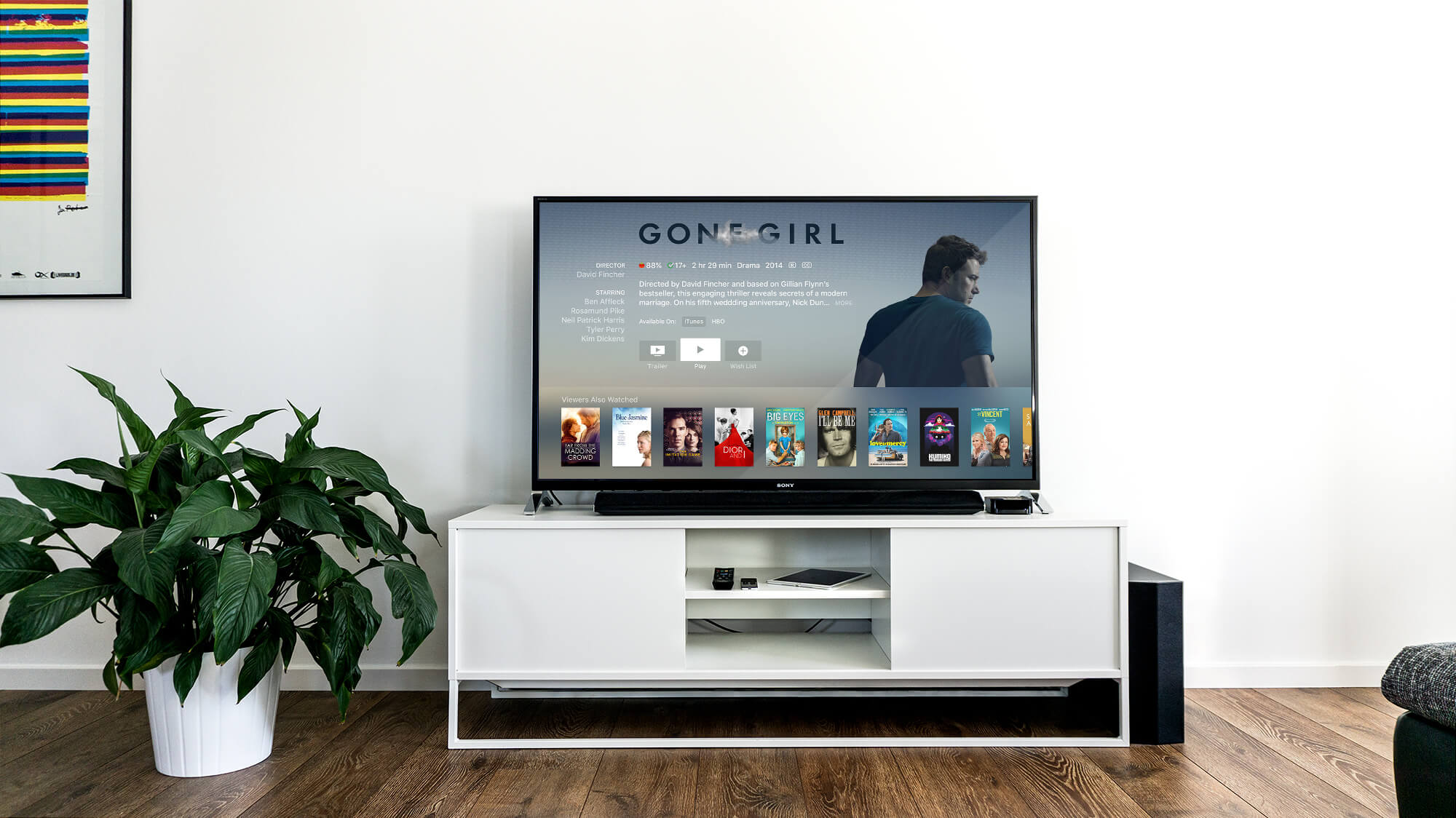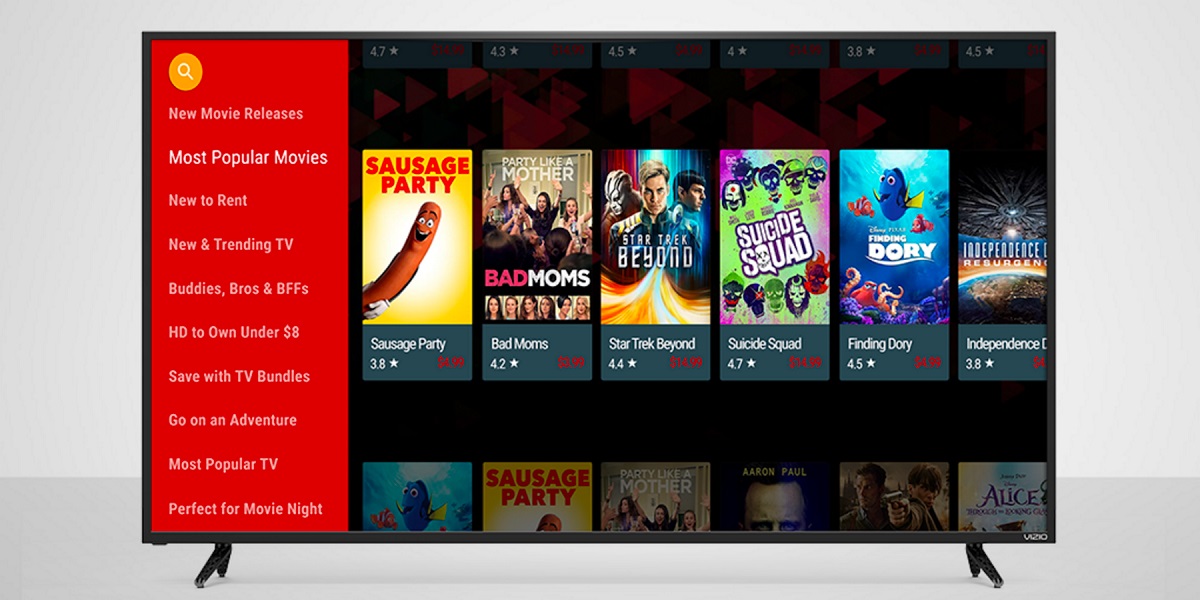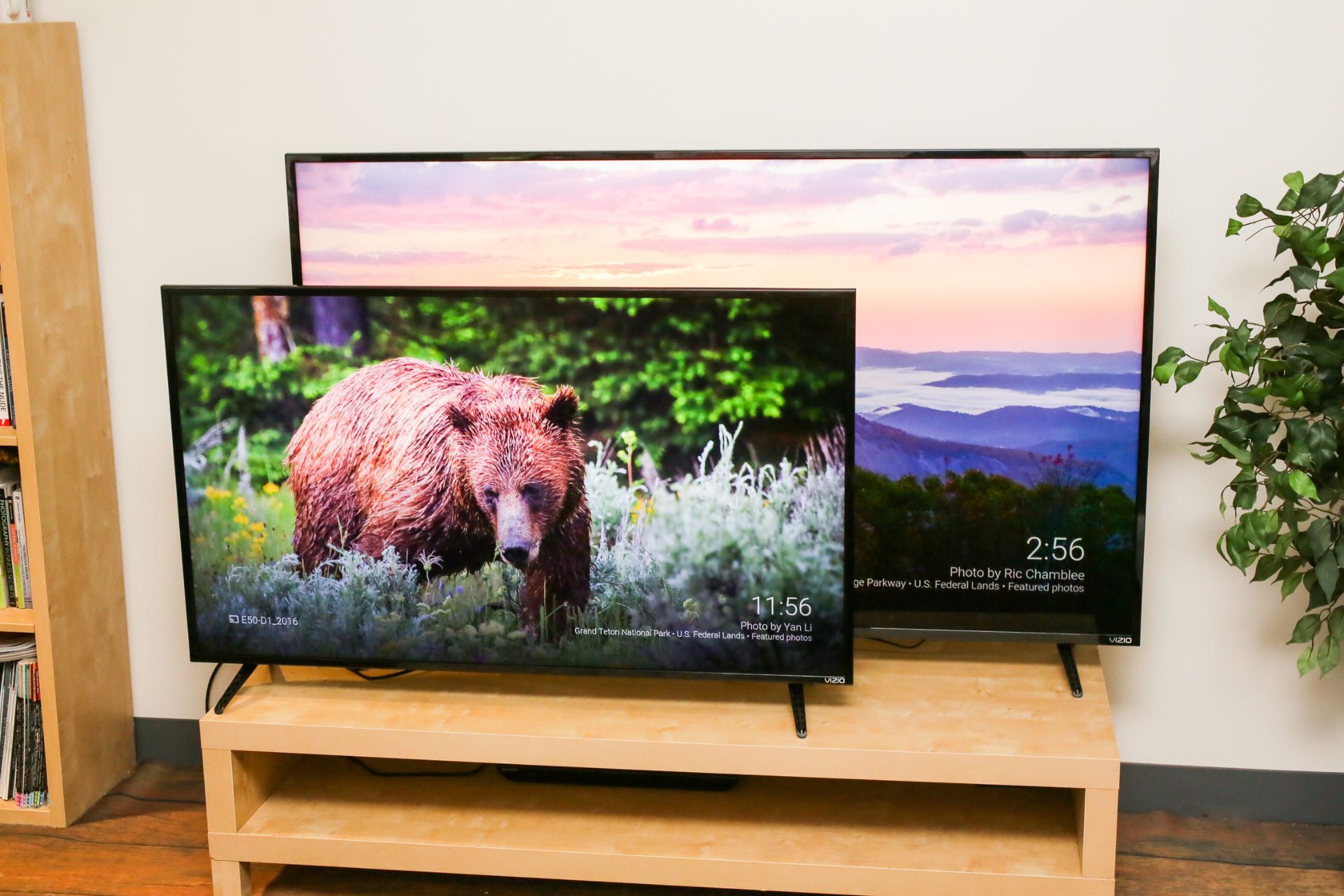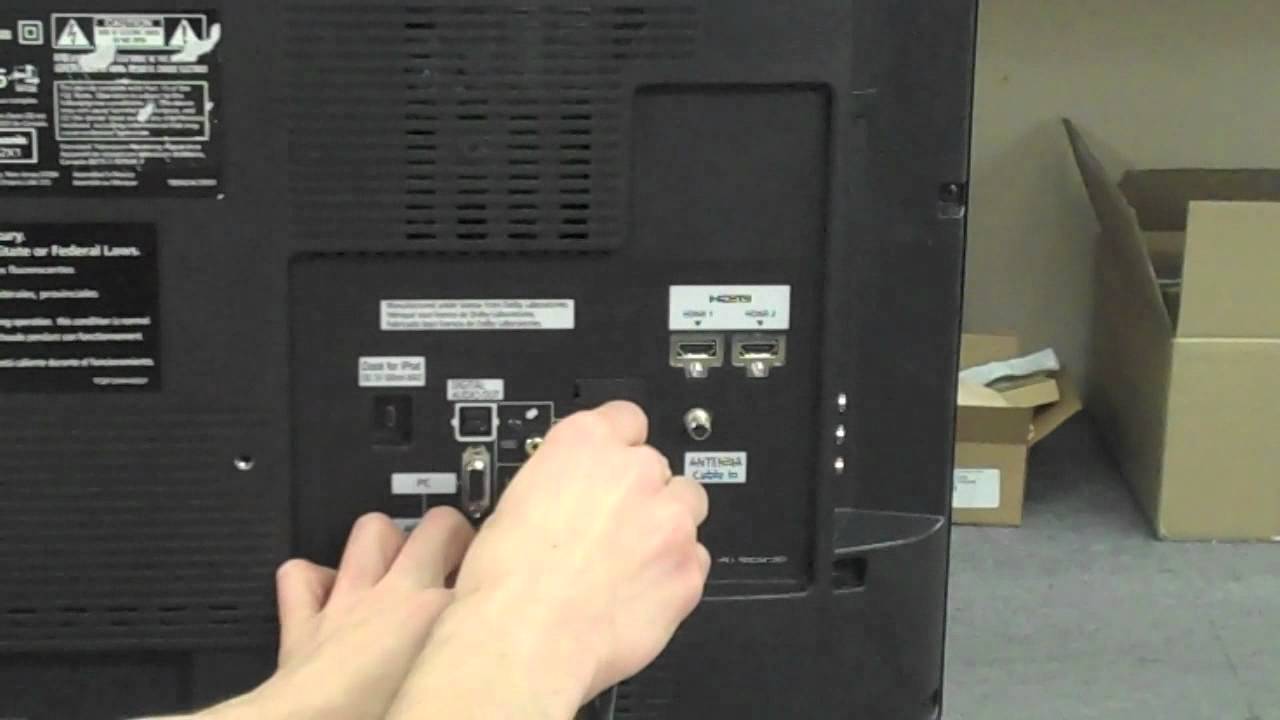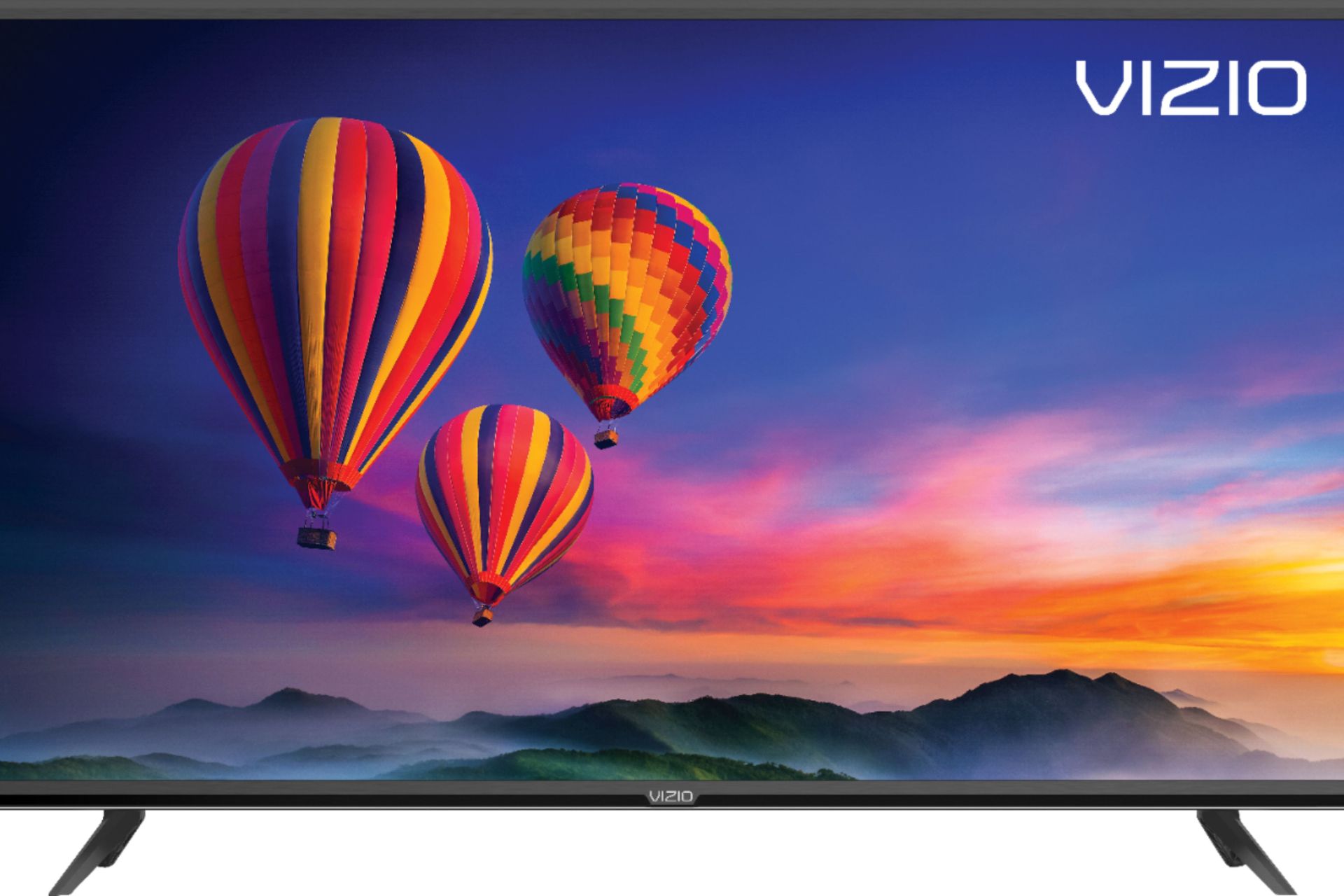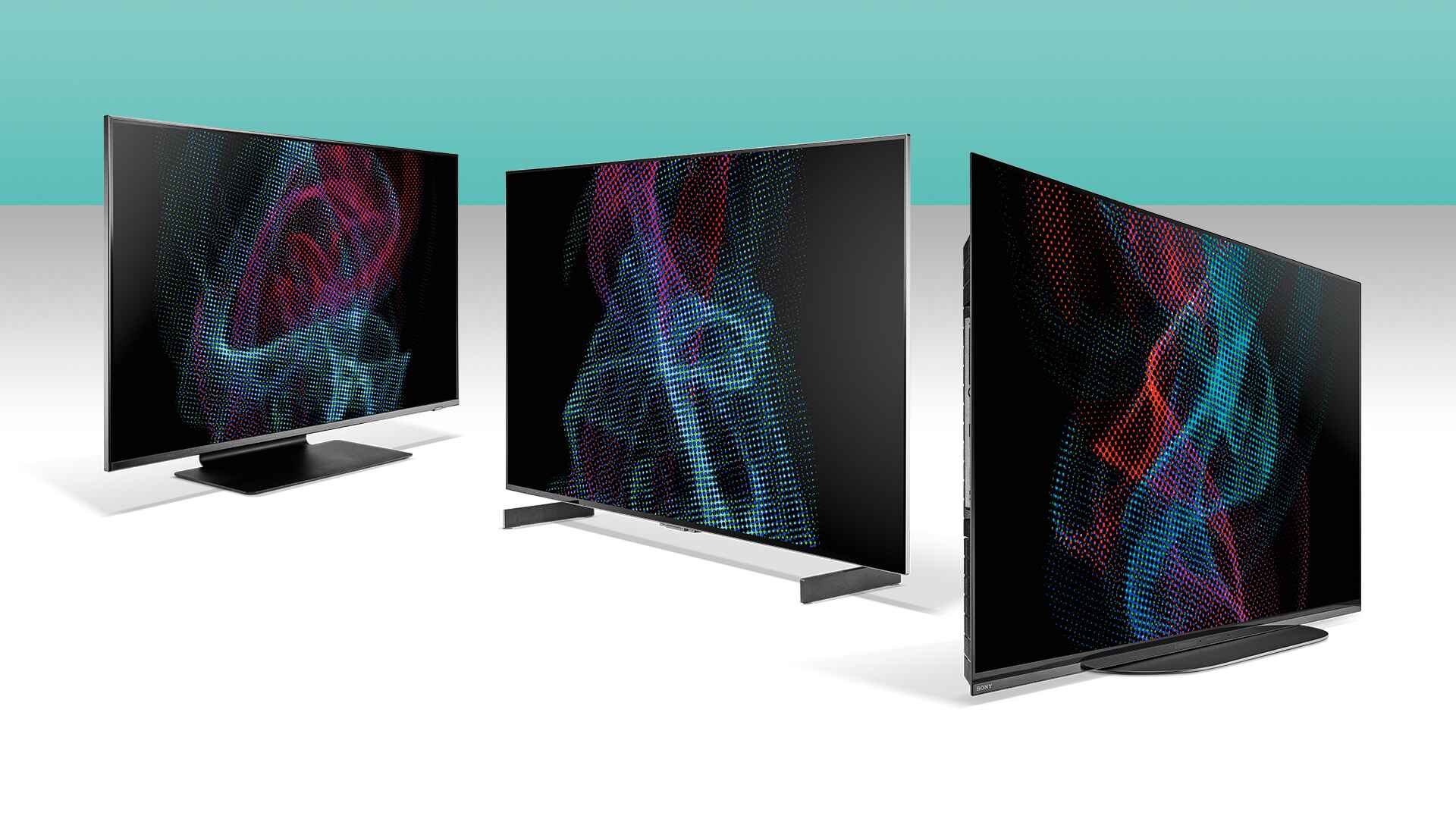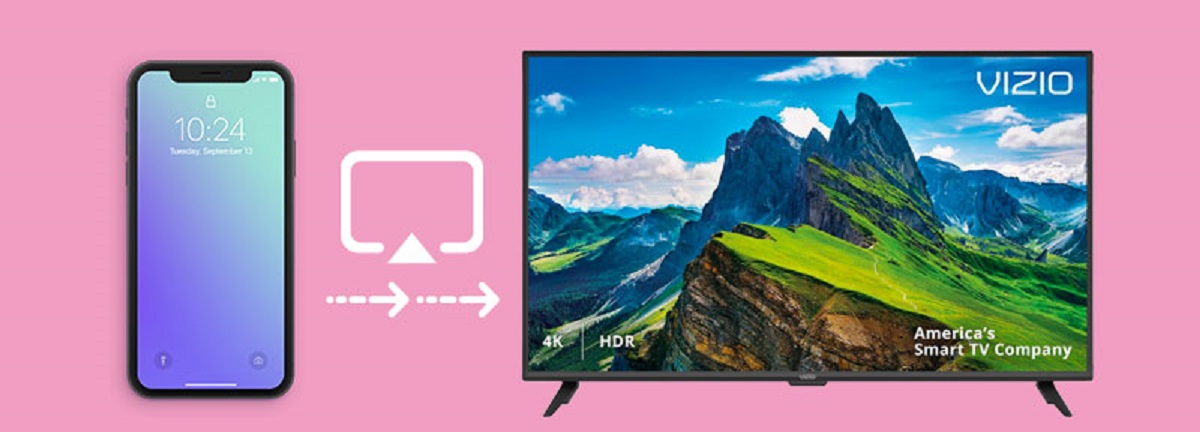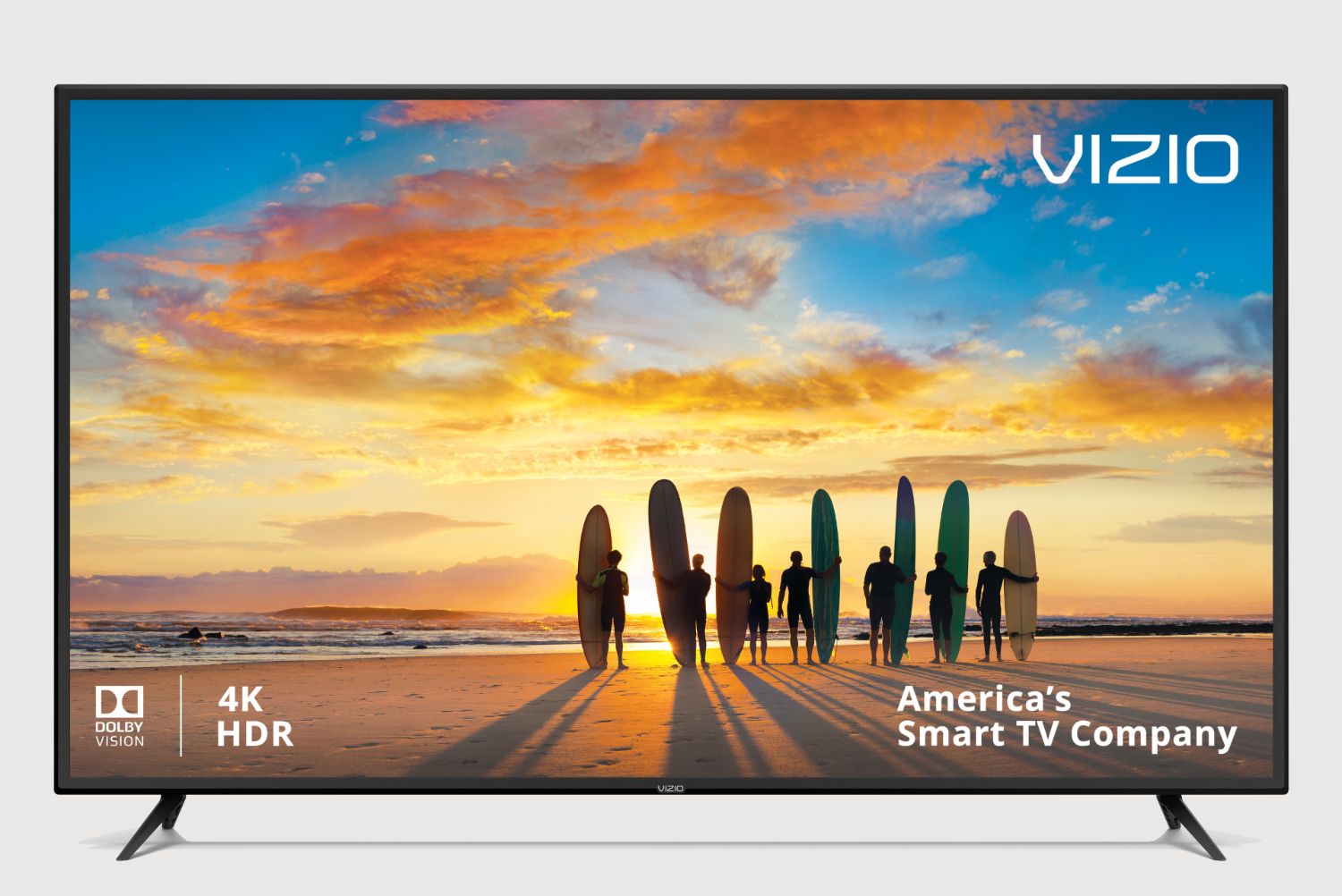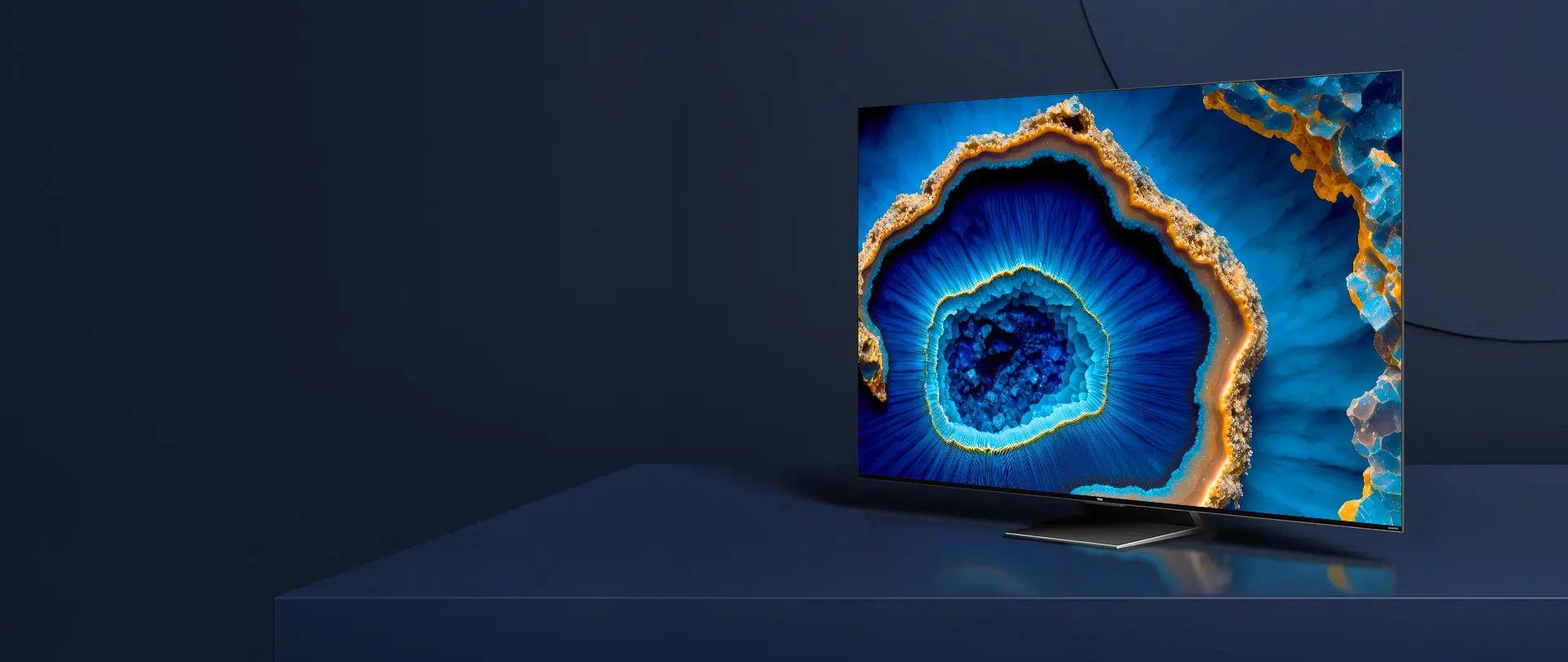Introduction
Welcome to the world of Vizio Smart TVs! With their sleek designs and advanced features, Vizio Smart TVs have become a popular choice for home entertainment. These smart TVs allow you to access a wide range of content, from streaming services to apps and games. But did you know that you can also play videos directly from a USB device on your Vizio Smart TV?
In this guide, we will walk you through the process of playing USB video on your Vizio Smart TV. Whether you want to watch your favorite movies, home videos, or downloaded content, connecting a USB device to your Vizio Smart TV is a convenient and straightforward way to enjoy your media.
Before we dive into the steps, let’s take a closer look at what Vizio Smart TVs are and what makes them stand out from traditional televisions. Vizio Smart TVs are equipped with built-in Wi-Fi and an intuitive user interface, allowing you to access a variety of online streaming services, such as Netflix, Hulu, and YouTube, without needing an external streaming device. Their smart features also include voice control, app compatibility, and the ability to mirror your smartphone or tablet screen on the TV.
Now that we have a basic understanding of Vizio Smart TVs, let’s get started on how you can prepare your USB device and play videos on your TV.
Understanding Vizio Smart TVs
Vizio Smart TVs are more than just your average television. They are designed to provide a seamless and interconnected entertainment experience. With their smart features and advanced technology, they enhance the way you watch TV and access content.
One notable feature of Vizio Smart TVs is their built-in Wi-Fi capability. This allows you to connect your TV to your home network, giving you access to a whole new world of online entertainment. You can stream movies and TV shows from popular services like Netflix, Amazon Prime Video, and Hulu directly on your TV without the need for additional devices.
Furthermore, Vizio Smart TVs come with a user-friendly interface that makes it easy to navigate through apps and settings. Most models have a dedicated home screen that displays your favorite apps, recently watched content, and suggested recommendations. You can use the TV remote or even control your Vizio Smart TV using voice commands with compatible virtual assistants like Amazon Alexa or Google Assistant.
Another advantage of Vizio Smart TVs is their ability to connect with other devices seamlessly. They support screen mirroring, allowing you to display the contents of your smartphone, tablet, or computer on the TV screen. This means you can share photos, videos, and presentations with friends and family on a larger display.
In addition to streaming services and screen mirroring, Vizio Smart TVs also offer a wide range of pre-installed apps. These apps can provide access to various entertainment options, including music streaming, gaming, news updates, and more. You can explore and download additional apps from the built-in app store to customize your TV’s functionality according to your preferences.
Vizio Smart TVs are designed with a sleek and modern aesthetic, featuring slim bezels and high-quality display technology. Depending on the model, you can enjoy stunning visuals with features like 4K Ultra HD, HDR (High Dynamic Range), and Dolby Vision. This creates a truly immersive viewing experience that brings your favorite movies, TV shows, and games to life.
Now that you have a better understanding of what Vizio Smart TVs have to offer, it’s time to learn how to prepare your USB device for playing videos on your Vizio Smart TV.
Preparing Your USB Device
Before you can start playing videos on your Vizio Smart TV from a USB device, you need to make sure that the USB device is properly prepared. Here are a few steps to follow:
- Format the USB device: To ensure compatibility with your Vizio Smart TV, it’s recommended to format your USB device using the FAT32 file system. This file system is supported by most TVs and media players. Keep in mind that formatting the USB device will erase all existing data, so make sure to back up any important files before proceeding.
- Organize your videos: It’s a good idea to organize your videos into separate folders to make navigation easier on your Vizio Smart TV. Create a dedicated folder for each video category, such as Movies, TV Shows, Home Videos, etc. This way, you’ll have a more organized library of videos to choose from when accessing them on your TV.
- Choose the right video format: Vizio Smart TVs support a wide range of video formats, but it’s best to stick to the most commonly used formats to ensure smooth playback. The recommended video formats include MP4, MKV, and AVI. Make sure that the videos you want to play on your TV are in one of these supported formats to avoid any compatibility issues.
- Check the video resolution: Vizio Smart TVs can handle various video resolutions, including 1080p (Full HD) and 4K Ultra HD. However, keep in mind that the playback quality may depend on the capability of your specific TV model. If you have a 4K TV, make sure that your videos are in 4K resolution to get the best visual experience.
- Verify the audio codec: Alongside video formats, audio codecs are important to consider for a seamless playback experience. For the best compatibility, choose videos with audio in AAC, MP3, or AC3 formats. Check if your videos have audio tracks encoded with one of these codecs or convert them if necessary.
By following these steps, you can ensure that your USB device is well-prepared and compatible with your Vizio Smart TV. Next, we’ll move on to transferring the videos to your USB device.
Supported Video Formats
When it comes to playing videos from a USB device on your Vizio Smart TV, it’s essential to ensure that the video format you choose is supported. While Vizio Smart TVs are capable of playing a wide range of video formats, it’s always a good idea to be aware of the most commonly supported ones to avoid any compatibility issues.
Here are the popular video formats that are typically supported by Vizio Smart TVs:
- MP4: MP4 is one of the most widely used video formats and is supported by virtually all Vizio Smart TVs. It provides good video quality and is compatible with various resolutions, including Full HD and 4K Ultra HD.
- MKV: Matroska Video (MKV) format is another commonly supported format on Vizio Smart TVs. It offers excellent quality and supports multiple audio and subtitle tracks, making it ideal for movies and TV shows.
- AVI: Audio Video Interleave (AVI) is a format that has been around for a long time and is still supported by Vizio Smart TVs. It offers good compatibility and is suitable for standard-definition videos.
- WMV: Windows Media Video (WMV) is a video format developed by Microsoft. While not as widely used as MP4 or MKV, many Vizio Smart TVs still support WMV for those who have videos in this format.
- MPEG: MPEG (Moving Picture Experts Group) is a widely recognized video format. It has multiple variants, such as MPEG-1, MPEG-2, and MPEG-4. Some Vizio Smart TVs may support specific MPEG formats, so it’s worth checking the compatibility of your TV model.
It’s important to note that while Vizio Smart TVs can support various video formats, the specific supported formats may vary depending on the model and firmware version. It’s always a good idea to consult your TV’s user manual or check the Vizio website for the most up-to-date information regarding supported video formats.
Now that you have a good understanding of the supported video formats, you can proceed with transferring the videos to your USB device and preparing them for playback on your Vizio Smart TV.
Transferring Videos to Your USB Device
Once you have prepared your video files in the appropriate formats, it’s time to transfer them to your USB device so that you can play them on your Vizio Smart TV. Here’s how you can do it:
- Connect your USB device to your computer: Plug your USB device into an available USB port on your computer. Ensure that it is recognized and mounted correctly.
- Create a folder for the videos: Open the file explorer on your computer and navigate to your USB device. Create a new folder and name it according to your preference. This folder will serve as the destination for your video files.
- Copy and paste the video files: Locate the video files you want to transfer from your computer’s storage. Select the videos and copy them (shortcut: Ctrl+C or right-click and select “Copy”). Go back to the folder you created on your USB device, and paste the files (shortcut: Ctrl+V or right-click and select “Paste”). The videos will now start transferring to your USB device.
- Monitor the transfer process: Depending on the file sizes and the speed of your computer and USB device, the transfer may take a few minutes or longer. Monitor the progress of the transfer to ensure that all files are successfully copied to your USB device.
- Eject the USB device: Once the transfer is complete, safely eject the USB device from your computer. This will ensure that all files are properly saved, and it is safe to remove the device.
It is important to note that while transferring videos to your USB device, make sure you have enough storage space available on the device. Video files can be quite large, especially if they are in higher resolutions, so ensure that your USB device has enough capacity to hold the files you want to transfer.
With your videos successfully transferred to the USB device, you are now ready to connect it to your Vizio Smart TV and start enjoying your favorite videos on the big screen.
Connecting Your USB Device to Your Vizio Smart TV
Now that you have transferred your videos to your USB device, it’s time to connect it to your Vizio Smart TV. Follow these steps to ensure a successful connection:
- Locate the USB port: Look for the USB port on your Vizio Smart TV. It is usually located on the back or side panel of the TV. Check your TV’s user manual if you’re having trouble finding it.
- Insert the USB device: Take your USB device and insert it into the USB port on your Vizio Smart TV. Make sure it is securely connected.
- Switch on your Vizio Smart TV: Turn on your TV using the remote or the power button on the TV itself. Wait for your TV to boot up and recognize the USB device. It may take a few moments for the TV to detect and initialize the USB connection.
- Access the media player: Once the USB device is recognized, navigate to the media player or video section of your Vizio Smart TV’s interface. This can usually be done by pressing the “Menu” button on your TV remote and selecting the appropriate option from the on-screen menu.
- Select your USB device: In the media player or video section, you should see a list of available devices. Select your USB device from the list to access the videos stored on it.
- Navigate and play your videos: Once you have accessed your USB device, you can navigate through the folders and files on it using the TV remote. Locate the video you want to play and select it. The video should start playing on your Vizio Smart TV.
It’s worth noting that the exact steps may vary slightly depending on the model of your Vizio Smart TV and its firmware version. However, the general process of connecting the USB device and accessing the videos should remain similar across different Vizio Smart TV models.
With your USB device connected and your videos playing on your Vizio Smart TV, sit back, relax, and enjoy the immersive viewing experience.
Navigating the Vizio Smart TV Interface
Once your USB device is connected and your videos are accessible on your Vizio Smart TV, it’s time to familiarize yourself with the TV’s interface and navigation controls. Understanding how to navigate the interface will help you easily access and play the videos you want to watch. Here are some common navigation features found on Vizio Smart TVs:
- Home Screen: The home screen is the main menu of your Vizio Smart TV. It is the starting point for accessing various apps, settings, and features. You can often find it by pressing the “Home” button on your TV remote.
- App Launcher: The app launcher displays a grid of available apps on your Vizio Smart TV. This can include popular streaming services like Netflix, Hulu, and YouTube, as well as other apps for music, sports, news, and more. You can navigate through the app launcher using the arrow keys on your remote.
- Settings Menu: The settings menu allows you to customize and configure various aspects of your Vizio Smart TV. You can access settings like picture and audio settings, network settings, device preferences, and more. Look for an icon or option labeled “Settings” or “Menu” on your TV remote to access this menu.
- Media Player: The media player on your Vizio Smart TV is where you can access and play videos from your USB device or other media sources. It typically provides options to browse through folders, select specific videos, and control playback functions such as play, pause, rewind, and fast forward. Use the arrow keys and the OK or Enter button on your remote to navigate and control the media player.
- Search Functionality: If you’re looking for a specific video or app on your Vizio Smart TV, you can use the search functionality. Look for a search icon or option on your TV’s interface or remote. Enter your search query using an on-screen keyboard or voice input, if available, and browse the search results to find what you’re looking for.
- SmartCast: Some Vizio Smart TVs feature SmartCast, which allows you to use your smartphone or tablet as a remote control and to cast content from compatible apps directly to your TV. Look for the SmartCast app on your TV or download it from the app store on your mobile device.
These are just some of the common navigation features you may find on your Vizio Smart TV. It’s important to note that the exact interface and navigation options may vary depending on the model and firmware version of your TV. Refer to your TV’s user manual or the Vizio website for specific information on navigating your particular model.
By familiarizing yourself with the Vizio Smart TV interface and navigation controls, you can easily explore and enjoy the various features and content available on your TV.
Playing USB Video on Vizio Smart TV
Now that you have successfully connected your USB device to your Vizio Smart TV and familiarized yourself with the interface, it’s time to start playing your USB videos on the TV. Here’s how you can do it:
- Access the media player: Navigate to the media player or video section on your Vizio Smart TV. You can usually find this in the main menu or home screen of the TV’s interface. Use the arrow keys on your remote to select and enter the media player.
- Select your USB device: In the media player, you should see a list of available devices. Look for your USB device and select it. This will display the contents of your USB device on the TV screen.
- Navigate through folders: If you organized your videos into folders on your USB device, use the arrow keys on your remote to navigate through the folders. Select the desired folder to open and view its contents.
- Select and play a video: Once you have located the desired video, highlight and select it using the arrow keys. This will open the video playback screen. Press the “Play” button on your remote to start playing the video.
- Control video playback: While the video is playing, you can use the playback controls on your remote to pause, resume, rewind, fast forward, and adjust the volume as needed. Simply press the corresponding buttons on your remote to control the playback.
- Exit the media player: When you’re finished watching a video or want to return to the main menu, press the appropriate button on your remote to exit the media player and go back to the previous screen or home screen of your Vizio Smart TV.
It’s worth noting that the playback options and controls may vary slightly depending on the specific model of your Vizio Smart TV and the firmware version it’s running. Some advanced features such as subtitles, audio tracks, and video settings like aspect ratio or zoom may also be available, depending on the capabilities of your TV.
By following these steps, you can easily play your USB videos on your Vizio Smart TV and enjoy them on the big screen. Sit back, relax, and immerse yourself in your favorite movies, TV shows, and home videos.
Troubleshooting Common Issues
While playing USB videos on your Vizio Smart TV is usually a straightforward process, you may encounter some common issues along the way. Here are some troubleshooting tips for resolving these issues:
- USB device not recognized: If your Vizio Smart TV does not detect your USB device, check if it is properly connected to the USB port. Make sure the USB device is formatted correctly with the FAT32 file system and that the videos are in supported formats. Try restarting your TV and reconnecting the USB device.
- Video not playing: If the video does not play on your Vizio Smart TV, ensure that the video format is supported. Some incompatible video formats may require conversion using video conversion software. Also, check if the video resolution and audio codec are supported by your TV. If none of these solutions work, try playing the video on a different media player or device to determine if the issue is specific to your TV.
- No audio or distorted audio: If you experience issues with the audio while playing a video, ensure that the audio codec is supported by your TV. Check if the video file has multiple audio tracks and try switching to a different track. Adjust the TV’s audio settings and make sure the volume is not muted or set too low. If the issue persists, try playing the video on another device to determine if it’s a problem with the video file or your TV’s audio system.
- Video playback lag or stuttering: If the video playback is not smooth and lags or stutters, it could indicate insufficient processing power or bandwidth. Ensure that your Vizio Smart TV is running the latest firmware version. Check your network connection to make sure it has sufficient speed. If using a Wi-Fi connection, try moving closer to the router or using a wired connection for a more stable connection.
- Playback controls not responding: If the playback controls on your remote are not responding, ensure that you are within the range of the TV’s infrared sensor. Check if the batteries in your remote are fully charged or replace them if necessary. If the issue persists, try using the physical buttons on your TV to control playback or try a different remote.
If you continue to experience issues despite trying the troubleshooting tips above, consult the user manual of your Vizio Smart TV or contact Vizio customer support for further assistance. They can provide specific guidance based on your TV model and help resolve any persistent issues you may encounter.
By following these troubleshooting tips, you can overcome common issues and ensure a smooth and enjoyable experience while playing USB videos on your Vizio Smart TV.
Conclusion
Playing USB videos on your Vizio Smart TV is a convenient and enjoyable way to enjoy your favorite movies, TV shows, and home videos on the big screen. By following the steps outlined in this guide, you can easily connect your USB device to your Vizio Smart TV, navigate the interface, and play your videos with ease.
We began by understanding the features of Vizio Smart TVs, including their built-in Wi-Fi, user-friendly interface, and compatibility with various apps and streaming services. We then discussed the necessary preparations to ensure a smooth playback experience, such as formatting the USB device, organizing video files, and choosing the supported video formats.
We then delved into the step-by-step process of transferring the videos to your USB device, connecting the device to your Vizio Smart TV, and navigating the TV’s interface to access and play the videos. We also provided troubleshooting tips to help you overcome common issues that may arise during the process.
Remember, it is essential to refer to your specific Vizio Smart TV model’s user manual or the official Vizio website for detailed instructions and any specific guidelines related to your TV.
Now that you have the knowledge and know-how, you can confidently connect your USB device to your Vizio Smart TV, sit back, and enjoy the immersive and cinematic experience that your favorite videos provide.







